Have you ever tried to use the wrong size rubber band only to have it break and snap back on your own hand? If this has happened to you, you understand the importance of choosing the right rubber band size. Too big, and you run the risk of the rubber band not being secure, but too small, and you run the risk of the band breaking and potentially snapping back at you. Continue reading for a rubber band size chart as well as our rubber band buying guide and ideas for rubber band projects.
Rubber Band Sizes and Measurements
Most rubber bands are manufactured out of natural rubber instead of synthetic rubber, as natural rubber has more elasticity. When rubber bands are on the larger side, they are often made from elastomer.
There are a few different measurements to a rubber band, which are then classified with a number. Rubber bands are measured by length, width, and thickness.

For example, size 14 rubber bands are 2 inches long, 1/16 inches wide, and 1/32 thick. The length of a rubber band is defined as half its circumference, the width is the distance from one cut edge to the other, and the thickness is the distance from the inner surface to the outer surface.
The classification of a standard rubber band size goes from smallest to largest, leading with the width measurement. Rubber bands that are 1/16 inches wide are numbered from 8-19. The next step up (numbered 30-35) are rubber bands measuring 1/8 inches wide. This continues for 1/4 inches, 3/8 inches, ½ inches, etc. Longer rubber bands start with a numbered classification above 100.
Rubber Band Size Chart
The standard thickness for a rubber band is 1/32. The following are common rubber band sizes ranging from size 8 to size 107.
| Classification | Length (inches) | Width (inches) |
| Size 8 rubber bands | 7/8 | 1/16 |
| Size 10 rubber bands | 1 1/4 | 1/16 |
| Size 12 rubber bands | 1 3/4 | 1/16 |
| Size 14 rubber bands | 2 | 1/16 |
| Size 18 rubber bands | 2 1/2 | 1/16 |
| Size 19 rubber bands | 3 | 1/16 |
| Size 30 rubber bands | 3 1/2 | 1/8 |
| Size 31 rubber bands | 2 1/2 | 1/8 |
| Size 32 rubber bands | 3 | 1/8 |
| Size 33 rubber bands | 3 1/2 | 1/8 |
| Size 62 rubber bands | 2 1/2 | 1/4 |
| Size 63 rubber bands | 3 | 1/4 |
| Size 64 rubber bands | 3 1/2 | 1/4 |
| Size 73 rubber bands | 3 | 3/8 |
| Size 74 rubber bands | 3 1/2 | 3/8 |
| Size 82 rubber bands | 2 1/2 | 1/2 |
| Size 84 rubber bands | 3 1/2 | 1/2 |
| Size 94 rubber bands | 3 1/2 | 1/4 |
| Size 105 rubber bands | 5 | 5/8 |
| Size 107 rubber bands | 7 | 5/8 |
| Size 117A rubber bands | 7 | 1/16 |
| Size 117B rubber bands | 7 | 1/8 |
Rubber Bands in Bulk
Buying rubber bands in bulk is cost-effective. Our Blue Summit Supplies elastics come in a wide variety of sizes, from size 8 to size 117B, with packs as small as 40 to packs as large as 5200, depending on how many elastics you need.

Colorful Rubber Bands
Colorful rubber bands can be used for creative projects, but they also serve a practical purpose. Colored rubber bands are easier to see if they fall on the floor or ground. In the UK, the postal service is known for using red rubber bands, called Royal Mail rubber bands.

These red rubber bands were implemented in the 2000s after the public complained about the number of rubber bands that were being left in the streets. The idea behind it was that the red bands would be easily noticed by mail carriers if they dropped them by mistake. The switch became a notable campaign and cultural phenomenon.
Projects with Rubber Bands

Rubber Band Ball
A rubber band ball is made by wrapping band after band over an initial ball or knot of rubber bands. The bands are continually added until the ball reaches your desired size.
You can use colored rubber bands to create different styles and patterns around the ball. The largest rubber band ball, which broke the world record, reached 2 meters in diameter. The over 700,000 band ball weighs over 4000 pounds.
Rubber band balls can also be purchased premade in a number of different sizes and colors.
Rubber Band Tie Dye
Rubber bands are the key tool in tie dye projects. Bands are used in different designs to create various patterns on shirts and other items.

The rubber bands hold the shirt in place and ultimately decide where your dye ends up bleeding or not bleeding into the shirt. With rubber bands, you can create as many splashes of color as you want.
🌈 How to Tie Dye Shirts Like a Pro—Even if it’s Your First Time
Other Handy Uses for Rubber Bands
- Wrap one flat rubber band around journals or notebooks to keep them tightly closed.
- Use a rubber band as a grip on jars for opening them more easily.
- A small rubber band around a nail polish lid can help you open stubborn bottles.
- Hold cut apples together with a rubber band to keep them from browning.
- Use a rubber band to keep rolls of thick ribbons from unspooling.
- Keep opened packages of snacks and other foods closed.
- Organize wires and cables with a rubber band that holds them together.
- A rubber band around a teacup can hold the tea bag tab to ensure it doesn’t fall into the teacup.
- A rubber band around a door handle will stop it from harshly banging against a wall.
- Putting a large rubber band around a slippery cutting board acts as a grip to prevent it from moving around when you use it.
- You can make your own toothbrush holder by wrapping a few rubber bands around a regular glass at different angles to create multiple sections.
- A rubber band on the top of a showerhead pipe will prevent a shower caddie from slipping.
- You can make your hangers slip-proof by adding a rubber band to both sides.
- Multiple rubber bands around a glass will make it slip-proof for children (use colored bands to make it more fun!)
- Use different colored rubber bands around a drinking glass to help people remember which glass is theirs at events or gatherings.
- You can also place rubber bands around the bottom of a drinking glass to note where the standard drink measurement is.
- Create a notice board by wrapping elastic bands around a corkboard that will hold reminders and other papers in place.
- Create a photo board by wrapping bands around any type of board to hold a collage of photos in place.
- Wrapping a rubber band around the end of a spoon will prevent it from falling into a pot.
Fun Facts About Rubber Bands
- Rubber bands are made by heating a mixture of rubber, sulfur, and other chemicals into strips. The strips are extended into tubes, cured, and then cut into bands.
- The largest consumer of rubber bands is the United States Postal Service. They use rubber bands to organize and sort mail. While the US Postal Service uses the most, the newspaper industry also uses an enormous amount of rubber bands to keep individual newspapers rolled or folded together for home delivery. Florists use a lot of rubber bands to make bouquets, and the agricultural products industry uses rubber bands to bunch vegetables together.
- Rubber bands were first patented in England by London industrialist Stephen Perry on March 7, 1845.
- Ancient civilizations in Mexico and Central America, such as the Aztec, Olmec, and Maya of Mesoamerica, are known to have made rubber using natural latex—a sap-like, milky fluid found in some plants—3000 years before Charles Goodyear received a patent for vulcanized rubber. It is believed they used the rubber to make bouncing balls for use in the legendary Mesoamerican ball games (which often ended in ritual sacrifice.)
More from Blue Summit Supplies
Do you love stationery as much as we do? We’ve covered a number of ideal supplies for offices, schools, or individuals.
- A Guide to the Best Erasers
- Stapler and Staple Sizes Guide
- How to Choose the Best Leather Portfolio
- The Best Thermal and Color Label Printers
-
Which Binder is the Best: Product Test
Follow our office and school supplies blog for the latest trends, product comparisons, and more.
If you have any questions or want to talk to someone about office supplies, send us an email or connect with us on Twitter, Facebook, or Instagram.
 For more informative articles about office supplies, subscribe to our email newsletter!
For more informative articles about office supplies, subscribe to our email newsletter!
Never fear, you won't begin receiving daily sales emails that belong in a spam folder. Instead, we promise a fun weekly roundup of our latest blog posts and great finds from across the web. And if you lose interest, it's always easy to unsubscribe with a single click.




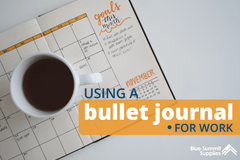


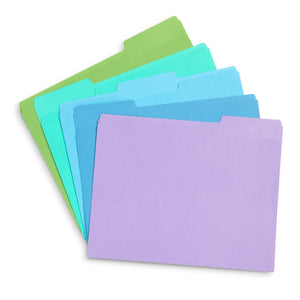
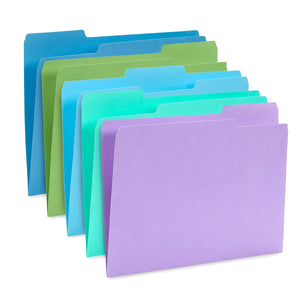
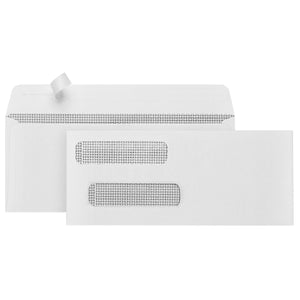
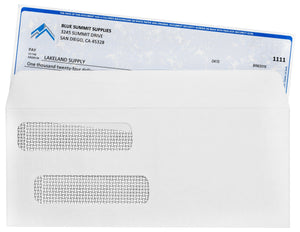
5 comments
suzie
I am interested in using rubber bands to make pop up cards. I am puzzled as to what size bands to use.
Any thoughts ?
Thanks,
Suzie
Bill K
What is the difference “Looking On Your Chart” between the size 30, 3-1/2×1/8 and size 33, 3-1/2×1/8
Thanks,
Bill
Ray
Good article in general, especially some of the fun facts. Adds a bit of character to an otherwise not so glamorous list. I am struggling to find less common sizes though and the list doesn’t really explain how to figure sizes for bands which are smaller in diameter and wider. I find them once in awhile on construction sites as I do commercial construction painting but I have yet to find who’s using them and what for. The ones I’m looking for are around 1-1/2 to 2" long in the flat folded state and around an inch wide. They are similar to the ones they use to keep lobster claws from opening and I’ve also seen them holding bunches of vegetables such as celery and asparagus but those particular ones don’t last long. They seem to deteriorate and fail quite rapidly so I am looking for ones that will hold up in outside conditions and to mild non petroleum based oils. They come in very handy for uses on my commuter bike. I’ve looked at several office supply stores but any that do have similar sizes are only offered in huge variety packs which don’t have many of the size I want and tons of sizes that I don’t and if they do have packages with a similar size, they look just like the inferior quality ones that won’t last as they are colored. The ones I find that last are almost always black although I have had a couple of the natural “gum” colored ones that lasted but with my luck, it’s always “easy come, easy go” so I end up losing them just as easily as I find them. I just wish I could find them more often, or find a supplier of my own.
Lizzie
Hello Judith!
I did some digging and it looks like there is one company (Alliance Rubber Company) that provides rubber bands for the US Postal Service. The ones they usually provide in bulk are size #64, but they provide other sizes as well. You can find more information about that here: https://www.rubberband.com/product/postal-bands-industrial/
I would assume the discarded ones from the Post Office that you’d acquired in the past are likely size #64. If they are, we sell those on our website! You can find them right here: https://www.bluesummitsupplies.com/products/business-source-rubber-bands-64-size-320-pack?variant=40398782300338
We also sell several different sizes of rubber bands besides the #64. You can browse them here: https://www.bluesummitsupplies.com/search?q=rubber%20bands
I hope this helps!
Judith
elastic bands are vital to me as I have arthritis. I find using them to hold together slippery files and folders is essential. It is much easier to extract the heavy files from a drawer and also the lighter cardboard ones. I have been using the larger discarded Post Office ones which kind friends have collected for me as I am disabled. I am trying to buy some more but struggling to find the correct size and thickness. Can you help please